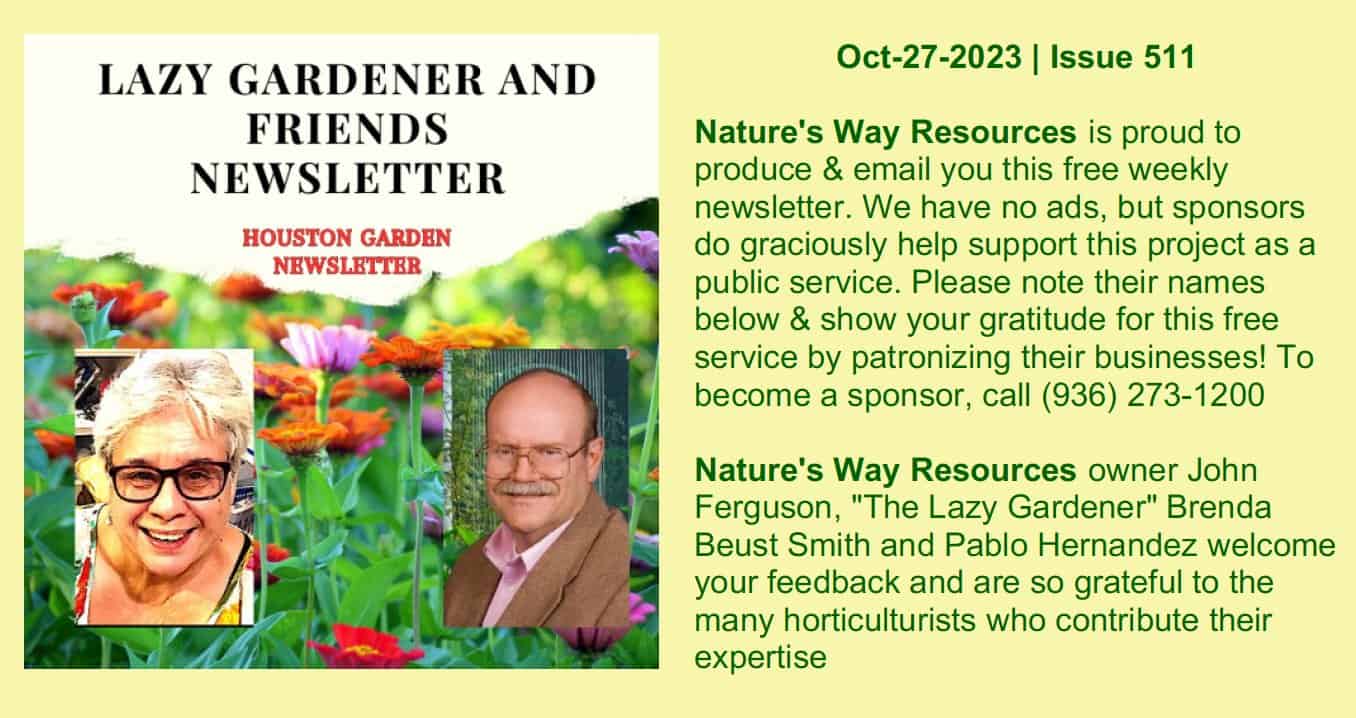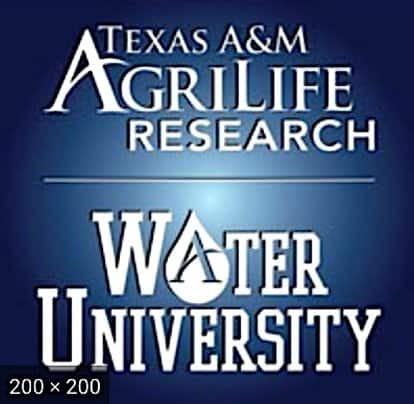

Lookin’ for marigolds for Dia de los Muertos?
BY BRENDA BEUST SMITH
For many gardeners (and a lot of my relatives), orange is a significant color this time of year — and not just for pumpkins. It is a treasured color of marigolds, or cempasúchil, iconic flower of Día de los Muertos (Day of the Dead) celebrating a temporary spiritual return of deceased family and friends. The ancient pre- Hispanic Mexico/Mesoamerica tradition is celebrated officially every Nov. 1-2. Like red poinsettias for Christmas, (another Mexican floral import), the rich colors light up any holiday display.
Ceremonies vary but always present: brilliant orange marigolds often surrounding the Calaveras of Mexican illustrator/satirist Jose Guadalupe
Posada (1851–1913). I especially love this Catrina picture from Liliana R. Cracraft. Note the cactus pad “dress”! (Catrinas remind us of life’s fragility, and death is part of the human cycle.)

While marigolds are not normally winter-hardy in Houston, they light up spring gardens and often will surprise by reblooming fall-December after a summer hiatus. Best keep potted now until March.
Back to that incredible field of marigolds atop this column, plants found in HEB and other stores are almost all from the Arnosky Family Farms in Blanco. TX. Owner Pamela Arnosky recommends buying now (while pickin’s are still good). Once celebrations end, she adds, to keep them alive until March (best in- gardening planting time for us), keep pots inside, use clean water with a drop of Clorox or — better — a Chrysal CVB tablet added. For more marigold- growing advice, sign up for the Arnosky free farm newsletter.
Here are some opportunities to celebrate/experience Day of the Dead celebrations around the Greater Houston area:
click2houston.com/features/2023/10/18/8-ways-to-celebrate-dia-de-los- muertos
visithoustontexas.com/blog/post/da-de-los-muertos-in-houston/
* * *

WHEN LIFE HANDS YOU A LANDSCAPE LEMON . . .
A friend is having a party. Due to circumstances she doesn’t want share, her whole front yard is being torn up. She recalled when this happened to me right before a party. She remembers laughing at our solution, but not what it was!
Long story short — above was our solution. I asked friends to come up with funny signs about mud. I figured when folks come to party at the home of a garden writer — even one who brags about being a “lazy gardener” — they expect, well, more than a muddy front yard. (On top of everything else, it rained the day before my party.)
Everyone laughed. Can’t ask for more than that! Not sure what my friend will do but I figured folks who came up with our crazy signs deserve a second mention!
* * *


NEWS FROM THE WONDERFUL WORLD OF SOIL AND PLANTS # 261
Tires – elderberry – bumble bees leaf mulch
Many gardeners enjoy having a pond or other water feature as part of their gardens filled with fish. Most of us do not like mosquitos. Fish and other aquatic life eat mosquito’s eggs reducing their population. Less aquatic life means more mosquitos.
A new study has found the cause of many fish kills —chemicals used in automobile tires. We have talked about the dangers of rubber mulch made from recycled tires many times, and this adds to the list as why they should never
be used in gardening or anywhere else for that matter.
For years many streams have experienced large fish kills that are called “urban runoff mortality syndrome.” The cause has finally been identified as a chemical that is found in tires. This chemical is known as 6PPD and was added to tires to slow tire degradation.
As tires wear, dust sized particles are released where 6PPD breaks down into 6PPD-q which is the second most toxic chemical known to harm aquatic species. In addition to being very toxic to fish and other aquatic species a recent study found that this chemical can bioaccumulate in mammals, causing inflammation, and increasing liver triglyceride levels in mice. You can find the link here.
Another reason not to use shredded tires as mulch, or weed control mats, etc.
One of my favorite landscape plants is our native elderberry (Sambucus nigra). It blooms several times each year producing large edible clusters of white flowerheads loved by our pollinators. The flower heads are used to make a very nutritious and delicious treat known as Elderberry Fritters.
Elderberries are a native plant that will grow in almost any soil, wet or dry, they are extremely drought and heat tolerant, yet will tolerate flooding and wet conditions. I have had a large plant in my backyard for years, it was a volunteer that popped up in a flowerbed, probably from seeds donated by some bird. It came through the recent heat wave and drought without watering or any other care.
The fruit of this plant has been used for thousands of years for its health benefits. The fruit is high in phytonutrients and when cooked properly also have a lot of anti-oxidants which help give it the flu- and other virus-fighting properties.
The University of Sydney found that chemicals in the berries also prevented cells infected with a virus from replicating. They found that those whom took elderberry syrup recovered from viruses four days sooner than those whom took a placebo syrup.
The berries can also be used to make pies, jelly, and wine. Note that the berries need to be cooked before eating.
I have noticed that several bird species will nest in its branches.
A couple weeks ago I talked about some new studies on bees that they have a form of intelligence. Queen Mary University of London has released a new study that show bumble bees “play.”
They found that the bumble bees went out of their way to roll wooden balls even when there was no reward. Younger bees rolled more balls than older bees. This same behavior of younger animals playing has been observed in mammals to birds. They also found that male bees rolled them for longer time than female bees.
Previous experiments have shown that bees could be taught to score a goal by rolling a ball to a target and offering a food reward. Animal Behavior (2022)
I got a chuckle out of an article in the journal HortTechnology (2022) on leaves. The Rutgers New Jersey Experimental Station has found that using fallen leaves from shade trees was beneficial for building soil organic matter.
They found it also protects against erosion, and was useful for controlling weeds when used as a mulch. They found increased growth and yield in their test crops and the soil held more moisture.
This was humorous to me as I know that Brenda and I have both been touting leaves as mulch and soil improvement, to do all the above for decades!

SPONSORSHIP
If you are interested in becoming a sponsor, please contact us at 936-273-1200 or send an e-mail to: lazygardenerandfriends@gmail.com

ABOUT US
BRENDA BEUST SMITH WE KNOW HER BEST AS THE LAZY GARDENER . . . but Brenda Beust Smith is also:
- a national award-winning writer & editor
- a nationally-published writer & photographer
- a national horticultural speaker
- a former Houston Chronicle reporter
When the Chronicle discontinued Brenda’s 45-year-old Lazy Gardener” print column — started in the early ’70s as a fun side-project to reporting, it then ranked as the longestrunning, continuously-published local newspaper column in the Greater Houston area. The name, she says, is not just fun, it’s true. Brenda’s gradual sideways step from reporter into gardening writing led first to an 18-year series of when-to-do-what Lazy Gardener Calendars, then to her Lazy Gardener’s Guide book which morphed into her Lazy Gardener’s Guide on CD, which she now emails free upon request. Brenda became a Harris County Master Gardener and, over the years, served on theboards of many Greater Houston area horticulture organizations. She hosted local radio and TV shows, most notably a 10+-year Lazy Gardener specialty shows on HoustonPBS (Ch. 8) and her call-in “EcoGardening” show on KPFT-FM. For over three decades, Brenda served as Assistant Production Manager of the GARDEN CLUB OF AMERICA’S “BULLETIN” magazine. Although still an active broad-based freelance writer, Brenda’s main focus now is THE LAZY GARDENER & FRIENDS HOUSTON GARDEN NEWSLETTER with John Ferguson and Pablo Hernandez of Nature’s Way Resources. A native of New Orleans and graduate of St. Agnes Academy and the University of Houston, Brenda lives in Humble, TX, and is married to the retired Aldine High School Coach Bill Smith. They have one son, Blake. Regarding this newsletter, Brenda is the lead writer, originator of it and the daily inspiration for it. We so appreciate the way she has made gardening such a fun way to celebrate life together for such a long time.
JOHN FERGUSON John is a native Houstonian and has over 27 years of business experience. He owns Nature’s Way Resources, a composting company that specializes in high quality compost, mulch, and soil mixes. He holds a MS degree in Physics and Geology and is a licensed Soil Scientist in Texas. John has won many awards in horticulture and environmental issues. He represents the composting industry on the Houston-Galveston Area Council for solid waste. His personal garden has been featured in several horticultural books and “Better Homes and Gardens” magazine. His business has been recognized in the Wall Street Journal for the quality and value of their products. He is a member of the Physics Honor Society and many other professional societies. John is is the co-author of the book Organic Management for the Professional. For this newsletter, John contributes articles regularly and is responsible for publishing it.
PABLO HERNANDEZ Pablo Hernandez is the special projects coordinator for Nature’s Way Resources. His realm of responsibilities include: serving as a webmaster, IT support, technical problem solving/troubleshooting, metrics management and quality control. Pablo helps this newsletter happen from a technical support standpoint.
Download the Newsletter with Our Events Calendar Below!

